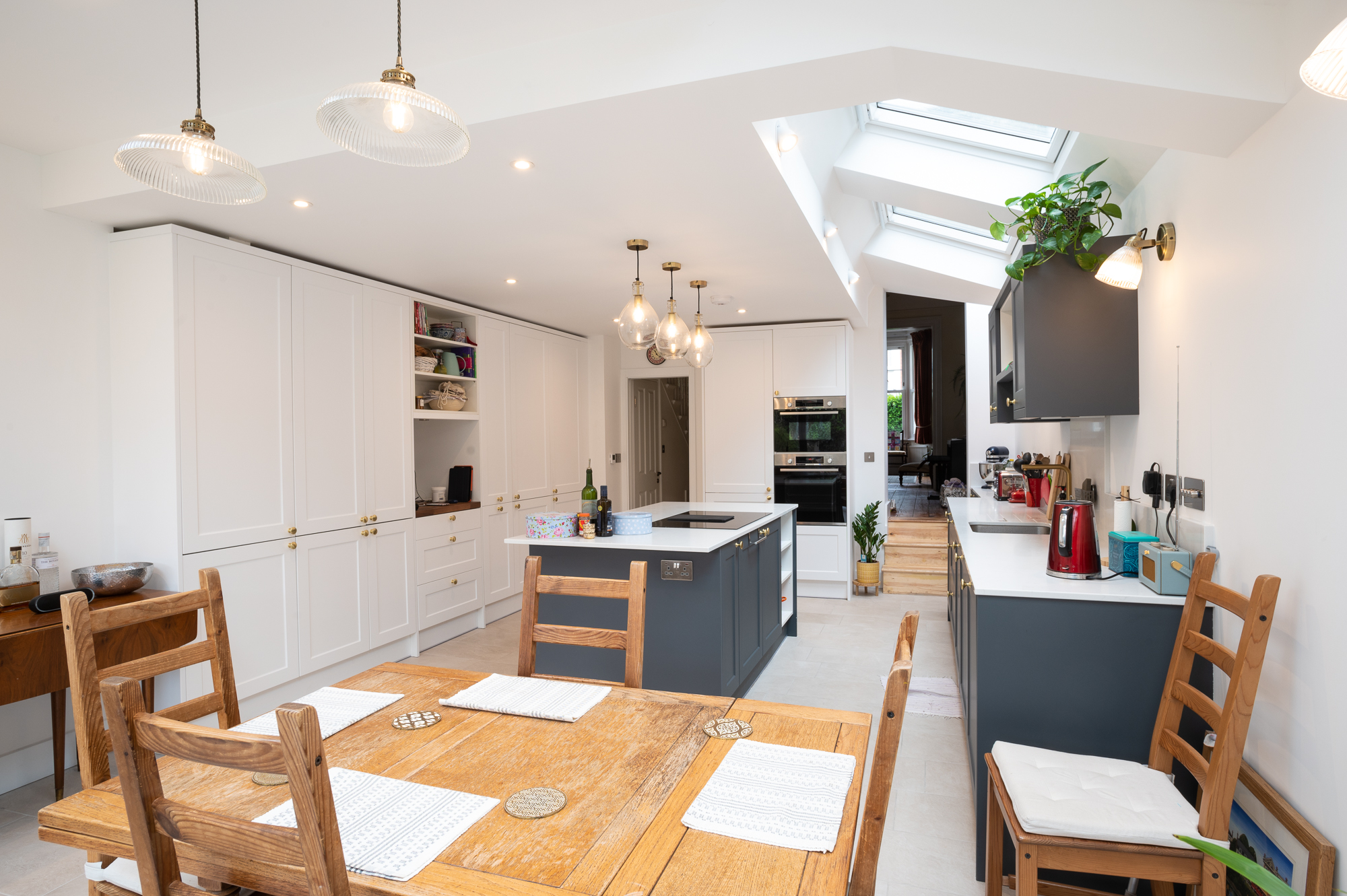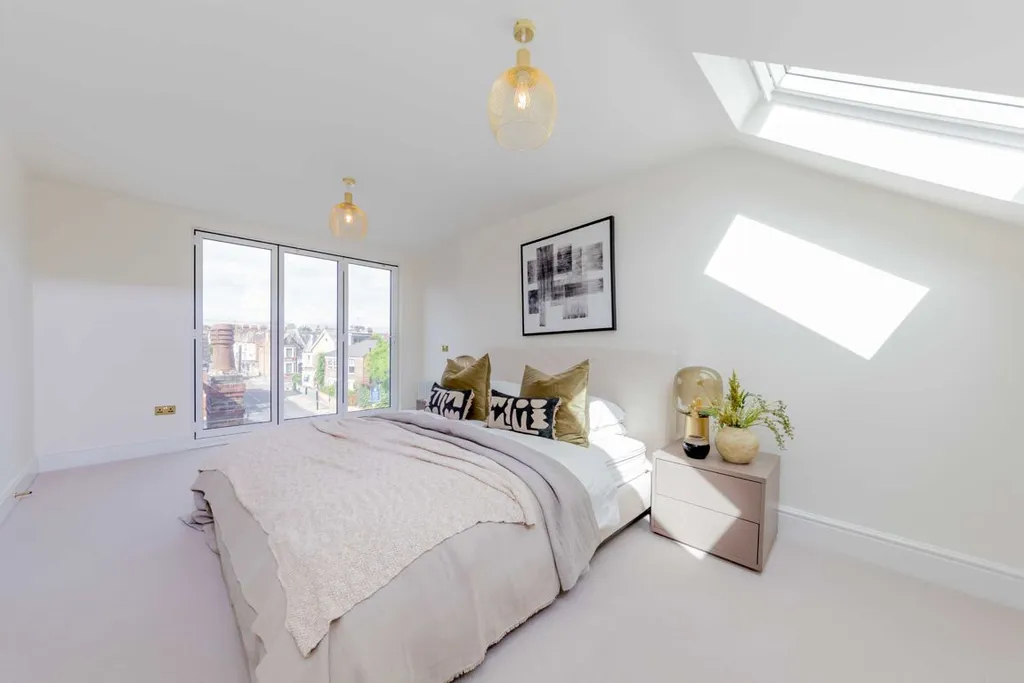It is not an exaggeration to say that owning a Victorian home is equivalent to owning a piece of architectural history. After all, the incredible influence of the Victorian era is still prevalent in many design styles and architectural examples.
But, though undeniably cherished, Victorian homes may not be entirely suited to modern living and contemporary lifestyles. This is where refurbishments come in. They allow homeowners to retain the charm and history of their home while at the same time upgrading it to meet their daily functional needs.
Needless to say, this is easier said than done. And blending historical charm with modern functionality to create a fine balance requires an expert hand.
What is Victorian architecture?

Victorian architecture refers to the architectural style that emerged during the reign of Queen Victoria, which lasted from 1837 to 1901. This era witnessed a range of architectural styles, reflecting the changing tastes, technological advancements, and societal influences of the time. Victorian architecture is therefore diverse and encompasses various styles, each with its own unique characteristics and distinct features.
Some of the key characteristics of Victorian architecture include:
- Ornate detailing- Victorian buildings are known for their intricate ornamentation and decorative detailing. Elaborate carvings, mouldings, and intricate patterns are common features.
- Asymmetry- Many Victorian structures display asymmetrical designs, with irregular floor plans and facades. This departure from strict symmetry was a notable shift from earlier architectural styles.
- Varied rooflines- Victorian roofs are often steeply pitched and may feature multiple gables, turrets, or dormer windows. Different roof shapes, including mansard roofs in the Second Empire style, contribute to the diversity.
- Use of diverse materials- Victorian architecture makes use of a wide range of materials, including brick, stone, wood, and cast iron. The contrast in materials and textures is a characteristic feature.
- Stained glass windows- Stained glass windows, featuring vibrant colours and intricate patterns, are common in Victorian homes. These windows are often found in both residential and institutional buildings.
- Gothic revival influence- Some Victorian buildings draw inspiration from mediaeval Gothic architecture, incorporating features such as pointed arches, buttresses, and ribbed vaults.
- Italianate style- The Italianate style, popular during the mid-19th century, is characterised by tall, narrow windows, roof overhangs, and sometimes symmetrical facades.
- Queen Anne style- Queen Anne architecture, which gained popularity later in the Victorian era, is known for its picturesque and eclectic features. This style often includes complex rooflines, turrets, and a mix of materials.
- Second Empire style- The Second Empire style, influenced by French architecture, is notable for its mansard roofs and dormer windows.
- Innovations in construction- Technological advancements in the Victorian era led to innovations such as the use of cast iron for decorative elements and the mass production of building components.
Incorporating modern elements within these classical features is therefore key to creating the ideal balance between the past and present.
Preserving architectural integrity while refurbishing Victorian homes

Naturally, refurbishing a Victorian home presents the unique challenge of balancing aesthetics with functionality to preserve the historical charm while meeting modern living needs. Here are some of the best tips and ideas to help you achieve a harmonious balance:
- Research and respect the era
Before initiating the refurbishment project, it is crucial to understand the architectural and design elements typical of the Victorian era.
Research the original colour palettes, patterns, and materials used during that time. This allows you to not just recognise authentic features such as ornate mouldings, trim, and stained-glass windows but also helps you decide on the design features you could restore to their original glory.
- Modernise with sensitivity
To achieve a seamless blend of classical design with contemporary functionality, consider integrating modern amenities without compromising historical integrity. This could be done by using clever design solutions that allow you to conceal modern technology when possible, like incorporating hidden wiring for electronics, to retain the classical and historic aesthetic.
- Opt for a sympathetic colour palette
To complement the Victorian style, it is recommended to choose a colour scheme that includes rich and deep hues. Alternatively, you can opt for neutral tones for the walls and add bright accent walls to highlight key features. To enhance the traditional appeal, consider using wallpaper or stencils to recreate period-appropriate patterns.
- Blend old and new furniture
For a truly balanced and eclectic look, mix antique Victorian pieces with modern furniture. You could also reupholster antique furniture with contemporary fabrics for a fresh touch.
- Create functional layouts
Victorian homes are renowned for their closed-plan layouts. While this may provide additional privacy, the space may not always meet the needs of modern living.
Open floor plans help create a sense of space and are typically more suited to contemporary lifestyles that appreciate the seamless flow between living spaces.
- Modernise the lighting
Incorporate period-appropriate light fixtures, but ensure they meet modern lighting standards. For a more contemporary feel, consider replacing old-fashioned chandeliers and sconces. You could also add task lighting where needed for functional purposes.
- Consider energy efficiency
One of the best parts of modernising your Victorian home is the opportunity it creates to introduce smart and energy-efficient appliances and systems into your home. However, it is important to implement these energy-efficient solutions without compromising their historic character.
For example, window treatments such as drapes maintain the aesthetic while providing insulation.
- Landscape with care
Extend the aesthetic to the exterior with Victorian-style gardens or period-appropriate landscaping. This enhances the curb appeal of your property as well.
- Think about the details
Ultimately, it is the small things that help tie in the design of the space. Pay attention to small details like hardware, doorknobs, and switch plates and choose designs that complement the Victorian style. You could even utilise salvage yards for authentic fixtures and materials.
- Consult the experts
As tempting as it may seem to DIY this project, to get the best possible result, it is always a good idea to employ experts. Not only can they offer invaluable advice, guidance, and project management, but they can also help you avoid many common mistakes during the design process that may prove costly in the long run.
That’s not all. This also provides you with the opportunity to work with architects, interior designers, and contractors experienced in historical renovations who can guide you on appropriate materials and designs while ensuring authenticity. They could also help you create customised solutions, such as cabinetry and storage solutions, that seamlessly blend into the Victorian aesthetic while providing modern functionality.
Hiring a professional team allows you access to a trove of information that could ultimately be the difference between a successful refurbishment of your Victorian-era home and an expensive mistake.
Undoubtedly, Victorian architecture remains a rich and fascinating chapter in the history of architectural design. But not all things of the past are suited to the present.
To make sure your home retains its historical charm while embracing modern comforts, the art of blending classical and contemporary must be perfected; allowing you to create the ideal home that is relevant to the past, present, and future generations.
Good Design and Build allow you to do just that. With decades of experience, unmatched expertise, and an unparalleled passion for renovating and refurbishing Victorian homes, our team of professionals will help you design and build the ultimate example of modernised history; a Victorian home that retains its charm while meeting the needs of contemporary living.




